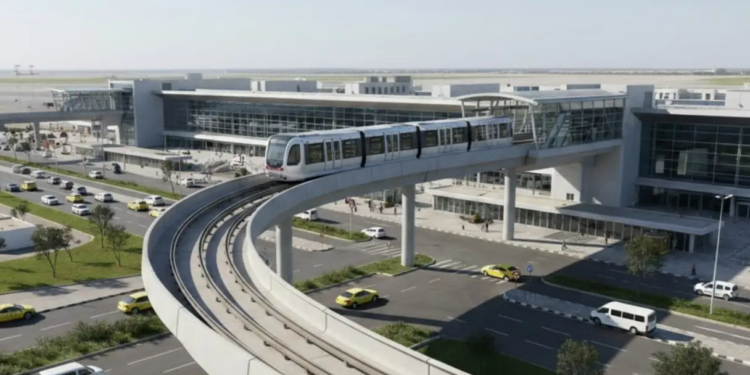The Minister of Transport, Rachid Amri, announced on Tuesday November 11, 2025 a project to extend the Tunis-Carthage international airport estimated at 3,000 million dinars. According to him, this ambitious plan includes the construction of a new terminal, the renovation of the runways and the establishment of an aerial metro linking the airport to the center of the capital. The stated objective is to double or even triple passenger capacity, in order to respond to the growth in air traffic and to strengthen the role of Tunis as a regional hub.
But this announcement immediately provoked heated controversy. While some see it as a strategic investment to modernize a saturated infrastructure, others denounce an expenditure considered excessive and poorly prioritized, in a context of economic crisis and budgetary tensions.
Supporters of the project point out that the Tunis-Carthage airport has been operating beyond its capacity for years. Its equipment is aging, its terminals are cluttered, and the quality of service is often criticized by travelers. According to them, investing in its modernization would improve the country’s image, boost tourism and attract new airlines. The addition of a skytrain, mentioned in the plan, would strengthen connectivity between the capital and the airport, reducing access times and boosting the local economy.
Critics point out that three billion dinars represent a colossal sum in the Tunisian context. They believe that these funds could be mobilized for more urgent needs: hospitals, regional infrastructure, energy transition or support for public companies in difficulty. Many also point to the critical situation of Tunisair, mired in debts and delays, and consider it a priority to reform the national company before investing massively in an airport that it would not be able to fully exploit.
A poorly prepared project?
Beyond the amount, it is the method which arouses distrust: the absence of precise details on financing, timetable and potential partners fuels a feeling of opacity. Some fear a project that is poorly prepared, or even politically exploited.
To avoid turning this ambition into a financial pit, several experts are calling for a gradual approach. Rather than launching a giant project straight away, it would be more judicious to phase the project: first renovate the runways, modernize essential equipment, then consider a new terminal when traffic growth justifies it. Others advocate using public-private partnerships to share risks and ensure more rigorous management, as well as to renovate other airports.
Finally, before any major investment, Tunisia would benefit from launching an independent opportunity study, comparing the extension of Tunis-Carthage to other options: the construction of a new, more modern airport in Bizerte or Enfidha, or even targeted investments in the promotion of heritage and domestic tourism, which could generate more balanced economic benefits.
Modernizing Tunis-Carthage is a necessity, but the way of doing it must be rethought. A staged project, backed by transparent governance and a coherent vision of the air sector, would better serve the interests of the country than a monumental expenditure without guarantee of profitability.
Read also








